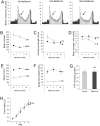Dietary modulation of Drosophila sleep-wake behaviour
- PMID: 20706579
- PMCID: PMC2919389
- DOI: 10.1371/journal.pone.0012062
Dietary modulation of Drosophila sleep-wake behaviour
Abstract
Background: A complex relationship exists between diet and sleep but despite its impact on human health, this relationship remains uncharacterized and poorly understood. Drosophila melanogaster is an important model for the study of metabolism and behaviour, however the effect of diet upon Drosophila sleep remains largely unaddressed.
Methodology/principal findings: Using automated behavioural monitoring, a capillary feeding assay and pharmacological treatments, we examined the effect of dietary yeast and sucrose upon Drosophila sleep-wake behaviour for three consecutive days. We found that dietary yeast deconsolidated the sleep-wake behaviour of flies by promoting arousal from sleep in males and shortening periods of locomotor activity in females. We also demonstrate that arousal from nocturnal sleep exhibits a significant ultradian rhythmicity with a periodicity of 85 minutes. Increasing the dietary sucrose concentration from 5% to 35% had no effect on total sucrose ingestion per day nor any affect on arousal, however it did lengthen the time that males and females remained active. Higher dietary sucrose led to reduced total sleep by male but not female flies. Locomotor activity was reduced by feeding flies Metformin, a drug that inhibits oxidative phosphorylation, however Metformin did not affect any aspects of sleep.
Conclusions: We conclude that arousal from sleep is under ultradian control and regulated in a sex-dependent manner by dietary yeast and that dietary sucrose regulates the length of time that flies sustain periods of wakefulness. These findings highlight Drosophila as an important model with which to understand how diet impacts upon sleep and wakefulness in mammals and humans.
Conflict of interest statement
Figures







Similar articles
-
Hypoxia modifies the feeding preferences of Drosophila. Consequences for diet dependent hypoxic survival.BMC Physiol. 2010 May 13;10:8. doi: 10.1186/1472-6793-10-8. BMC Physiol. 2010. PMID: 20465825 Free PMC article.
-
Re-patterning sleep architecture in Drosophila through gustatory perception and nutritional quality.PLoS Genet. 2012;8(5):e1002668. doi: 10.1371/journal.pgen.1002668. Epub 2012 May 3. PLoS Genet. 2012. PMID: 22570630 Free PMC article.
-
Correlates of sleep and waking in Drosophila melanogaster.Science. 2000 Mar 10;287(5459):1834-7. doi: 10.1126/science.287.5459.1834. Science. 2000. PMID: 10710313
-
Sleep and wakefulness in Drosophila melanogaster.Ann N Y Acad Sci. 2008;1129:323-9. doi: 10.1196/annals.1417.017. Ann N Y Acad Sci. 2008. PMID: 18591491 Free PMC article. Review.
-
Circadian Rhythms and Sleep in Drosophila melanogaster.Genetics. 2017 Apr;205(4):1373-1397. doi: 10.1534/genetics.115.185157. Genetics. 2017. PMID: 28360128 Free PMC article. Review.
Cited by
-
Effects of Dendropanax morbiferus Leaf Extract on Sleep Parameters in Invertebrate and Vertebrate Models.Antioxidants (Basel). 2023 Oct 21;12(10):1890. doi: 10.3390/antiox12101890. Antioxidants (Basel). 2023. PMID: 37891970 Free PMC article.
-
Quantifying Drosophila food intake: comparative analysis of current methodology.Nat Methods. 2014 May;11(5):535-40. doi: 10.1038/nmeth.2899. Epub 2014 Mar 30. Nat Methods. 2014. PMID: 24681694 Free PMC article.
-
Regulation of Carbohydrate Energy Metabolism in Drosophila melanogaster.Genetics. 2017 Dec;207(4):1231-1253. doi: 10.1534/genetics.117.199885. Genetics. 2017. PMID: 29203701 Free PMC article. Review.
-
Supplementation of essential amino acids suppresses age-associated sleep loss and sleep fragmentation but not loss of rhythm strength under yeast-restricted malnutrition in Drosophila.J Biochem. 2025 Mar 4;177(3):225-237. doi: 10.1093/jb/mvae090. J Biochem. 2025. PMID: 39696747 Free PMC article.
-
Genetic background has a major impact on differences in sleep resulting from environmental influences in Drosophila.Sleep. 2012 Apr 1;35(4):545-57. doi: 10.5665/sleep.1744. Sleep. 2012. PMID: 22467993 Free PMC article.
References
-
- Tuomilehto H, Peltonen M, Partinen M, Lavigne G, Eriksson JG, et al. Sleep Duration, Lifestyle Intervention and Incidence of Type 2 Diabetes in Impaired Glucose Tolerance. Diabetes Care. 2009;32:1965–1971. doi:10.2337/dc08-1980. - DOI - PMC - PubMed
-
- Afaghi A, O'Connor H, Chow CM. Acute effects of the very low carbohydrate diet on sleep indices. Nutr Neurosci. 2008;11:146–154. - PubMed
-
- Rontoyanni VG, Baic S, Cooper AR. Association between nocturnal sleep duration, body fatness, and dietary intake in Greek women. Nutrition. 2007;23:773–777. - PubMed
-
- Afaghi A, O'Connor H, Chow CM. High-glycemic-index carbohydrate meals shorten sleep onset. Am J Clin Nutr. 2007;85:426–430. - PubMed
-
- Hitze B, Bosy-Westphal A, Bielfeldt F, Settler U, Plachta-Danielzik S, et al. Determinants and impact of sleep duration in children and adolescents: data of the Kiel Obesity Prevention Study. Eur J Clin Nutr. 2009;63:739–746. - PubMed
Publication types
MeSH terms
Substances
Grants and funding
LinkOut - more resources
Full Text Sources
Molecular Biology Databases

